Content
The Giant blackberry variety can be called a masterpiece of horticultural culture and berry selection - judge for yourself, both remontant and thornless, and berries the size of a palm, and a yield of up to 35 kg per bush. Whether such a thing can actually exist is up to you to think about and decide. Many reviews and descriptions of the remontant blackberry variety Gigant are choked with delight in describing the unique advantages of this berry. This article contains all the real facts related to the Giant blackberry that were obtained, and a comparative study of reviews from gardeners and statements from managers of a trading company that sells seedlings of this variety in Russia.
History of selection
Remontant blackberry varieties appeared relatively recently, at the turn of the 20th and 21st centuries.Their selection was mainly carried out by American scientists from the state of Arkansas, and they managed to obtain many interesting varieties that are capable of producing crops twice a year: on last year’s branches and annual shoots.
Remontant varieties of blackberries have many advantages - and one of the main ones is that absolutely all shoots can be cut out before winter. This makes it possible not to worry too much about the winter hardiness of the southern blackberry and to grow it even in regions with harsh winters (-40°C and below).
In addition, complete pruning of all shoots and later periods of development and fruiting greatly limit the possibilities of potential pests and pathogens of blackberries. That's why remontant blackberry, like raspberries, are practically not susceptible to any misfortunes and, accordingly, do not require treatment, especially with chemicals, which allows you to obtain an absolutely healthy and harmless berry for humans.
Unfortunately, selection has not yet reached such achievements. All of them are distinguished by thorny shoots, which, of course, makes picking berries difficult.
In Russia you can find only one single seller, who is also the supplier of Gigant blackberry seedlings (Becker Bees LLC). It is on the website of this agricultural company in the plant catalog that you can see the product under the article 8018 Blackberry remontant Giant. And right next to it, in small letters in English, it says Blackberry thornless Giant, which translated means thornless giant blackberry.
Unfortunately, the supplying company does not provide any information about the origin of this variety, and the buyer’s direct question in the reviews: whose selection of the Giant blackberry variety is kept silent.
Of course, it is useless to look for this variety in the State Register of Russia; however, this is the fate of most modern blackberry varieties of foreign origin.
Description of the berry crop
Blackberry Giant, as follows from the description of the crop presented on the website of the supplier of its seedlings, can grow in height from 1.5 to 2.5 meters. The shoots are flexible, so it can and should be grown on trellises, where it can also be used as a decoration. Because, thanks to its remontant nature, according to the manufacturer, the flowering period of the Giant blackberry lasts from June to September.
It is worth noting here that in most regions of Russia there is no point in growing remontant blackberries, leaving the shoots without pruning for the winter, since in this case they will have to be covered for the winter, and there will be more problems with pests and diseases. But in this case, flowering of annual shoots should begin no earlier than July-August.
And even in the southern regions, if you leave last year’s shoots to winter to get the first early harvests, then the blackberry bushes are unlikely to bloom continuously from June to September. In remontant varieties, two pronounced waves of flowering and fruiting are usually observed, with a break between them.
According to the seller-manufacturer, the fruiting period of the remontant Gigant blackberry lasts from July to September.
The supplier does not indicate any data on the type of shoot growth (creeping or erect).
Berries
The berries of the Gigant blackberry variety are truly unique. Their shape is both elongated and slightly rounded, reminiscent of thumbs on a hand. Nutritional properties are at the level of the most outstanding varieties, the taste is sweet and sour, with a characteristic blackberry aroma.The color of ripe berries is deep black.
But the most important thing, of course, is the size of the berries. It is claimed that they reach a length of 6 cm, and one such berry can weigh up to 20-23 grams. This is truly a giant!
Characteristic
The remontant blackberry variety Gigant has the following characteristics.
Main advantages
According to the supplier of blackberry seedlings, the Giant variety has many advantages.
- It is very winter-hardy - can withstand down to -30°CAttention! Remontant varieties of blackberries, if completely pruned before winter, can withstand lower temperatures, and without special shelter.
- The Giant variety is unpretentious in care and does not require any special protective measures.
- The berries are well stored and quite easily transported
- You can collect two harvests of berries per season
Yield indicators
But the most impressive statement of the giant blackberry supplier is information about its yield. It is claimed that up to 35 kg of fruit can be obtained from one bush of this variety. No further details are given, but for comparison, some of the highest-yielding blackberry varieties produce a maximum of about 15-20 kg of berries per bush.
Area of application of berries
Berries of the Gigant variety can be used both fresh, to decorate holiday dishes, and for a variety of homemade preparations.
Advantages and disadvantages
The advantages of the Giant blackberry have already been listed above. Among the disadvantages, one can only note that it does not respond well to a lack of moisture in the soil and to heavy, dense soils.
Reproduction methods
The supplier does not say anything in the description of the Gigant blackberry variety about root shoots, so it is not clear whether this, the most accessible method of propagating a berry plant, can be used in this case.
In any case, new blackberry plants are usually obtained by cuttings or rooting the top.
Landing rules
In general, planting the Gigant blackberry variety does not differ radically from planting other varieties of this berry crop.
Recommended timing
It is recommended to plant Giant blackberry seedlings from March to November. In principle, if we are talking about seedlings with a closed root system, then these terms are completely justified. But in the southern regions, it is still advisable to time the planting of seedlings in the spring or autumn, since the sun and high temperatures in summer can greatly impair the survival rate of seedlings.
Choosing a suitable location
It is argued that the Giant blackberry variety is best planted in a sunny place. But again, in the southern regions, blackberries grown in the sun can get sunburned on both the berries and the leaves.
Soil preparation
Blackberries of any variety prefer breathable, light soils with a neutral or slightly acidic reaction. Soils with a high content of limestone can be harmful to shrubs, as they can cause chlorosis on the leaves - yellowing.
Selection and preparation of seedlings
When choosing seedlings, it is necessary first of all to take into account the condition of the roots, the length of which should be at least 15 cm, and the root branches themselves should be about two to four. In this case, the height of the above-ground part of the bushes should be at least 40 cm. Before planting, it is advisable to soak the seedlings of the Gigant variety for prevention in a 0.6% Aktara solution with the addition of tobacco dust.
Algorithm and landing scheme
Giant blackberry seedlings are planted in pre-dug holes to a depth of about 20-30 cm. The distance between seedlings when planting is recommended to be 1-1.2 meters. Since this is a climbing crop, it is immediately necessary to provide for the organization of a trellis and tie shoots to it.
Subsequent care of the crop
It is claimed that the Giant blackberry is easy to care for.
Necessary activities
The most important thing in caring for blackberries is regular and fairly abundant watering. However, you can’t overdo it here either - the berry does not tolerate waterlogging.
Feeding is carried out several times per season. In the spring, complex fertilizer is applied, and in the summer, blackberries are fertilized mainly by applying phosphorus and potassium fertilizers.
Bush pruning
When pruning remontant varieties, the most important thing is to understand what you want from the bushes - either one, but abundant and reliable harvest at the end of summer, or several waves of harvests, starting in June. As noted earlier, in the second case, you will have to take additional care of covering the blackberries for the winter and protecting them from enemies, such as parasites.
In the first case, all blackberry shoots are simply cut off in late autumn at winter level. If you live in a region with harsh winters, it is advisable to cover the root zone with additional hay or sawdust.
In the second case, there is no need to do pruning before winter, but only shoots of the second year are cut out, preferably in the summer, immediately after the end of fruiting.
Preparing for winter
In the second case, the remaining shoots must be removed from the trellises and bent to the ground, then covered with hay or sawdust and covered with non-woven material, such as lutrasil.
Diseases and pests, methods of control and prevention
Type of problem | What can be done |
Leaf chlorosis of non-infectious origin | Immediately after the snow melts, feed the bushes with a complex of fertilizers with a full range of microelements |
Aphids, mites, flower beetles and other pests | In the fall, water the soil under the bushes with Aktara's solution, and in early spring, spray it twice with Fitoverm. |
Fungal diseases | When the buds open, treat the blackberries with a 3% solution of Bordeaux mixture |
Reviews
On the website of the company supplying blackberry seedlings Gigant, reviews of this variety are mostly enthusiastic. True, the vast majority of gardeners only managed to receive seedlings and plant them. The first blackberry harvest after planting should be expected, according to the company managers themselves, in about 2-3 years. There are also those who have not only tasted the berries, but also managed to make money from them (after all, the harvest reaches 35 kg per bush), but these are found in single copies. On the other hand, some managers’ answers to gardeners’ questions are contradictory. For example, they just wrote (2017-11-02 in response to Veronica) that there are no both remontant and thorny blackberry varieties, and several months later (2018-02-16 in response to Elena) they answered about the above-mentioned blackberry variety that he is thornless.
On other gardening forums, reviews about seedlings from this company, and, in particular, about the Giant blackberry, are not at all encouraging. Buyers are sent half-withered plants, they change them, but they still don’t take root. But even if they survive, they turn out to be completely different from what was written on the label.
Conclusion
The Giant blackberry, if it exists, of course, is a truly fantastic variety in many respects: the size of the berries, the yield, the winter hardiness, and the ease of care. It feels like all the most attractive features of blackberries are collected in one variety. In nature, there is rarely such an obvious imbalance of even positive properties. And the most suspicious point is that with all the variety of modern choices, no one else offers this variety for sale. It is also not found abroad. So the choice is yours - to buy or not to buy, to plant or not to plant.
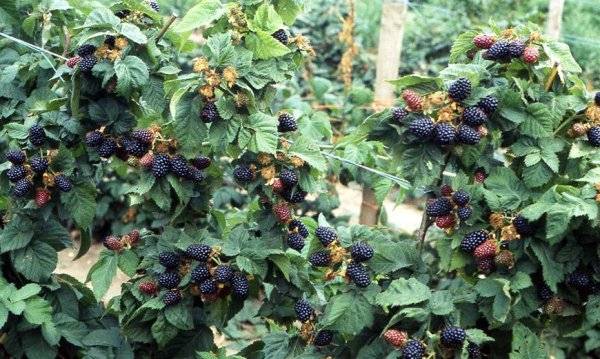
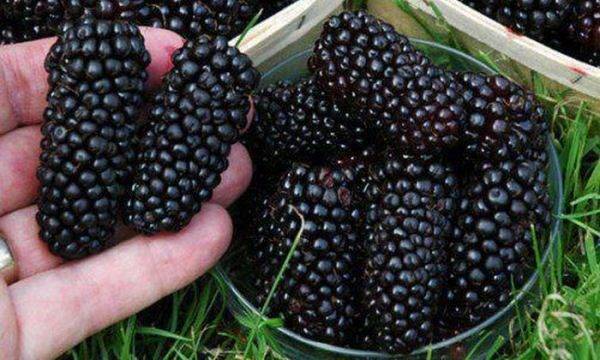

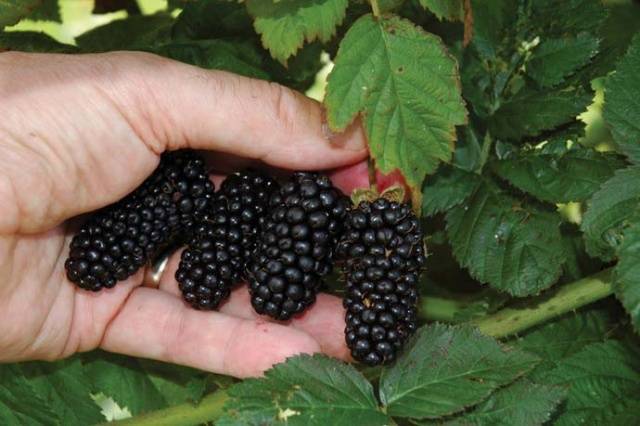
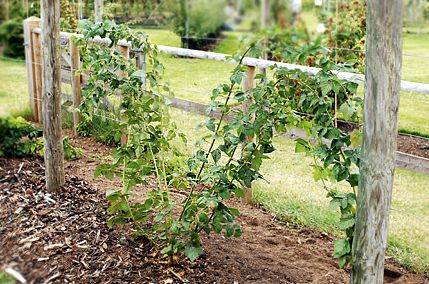
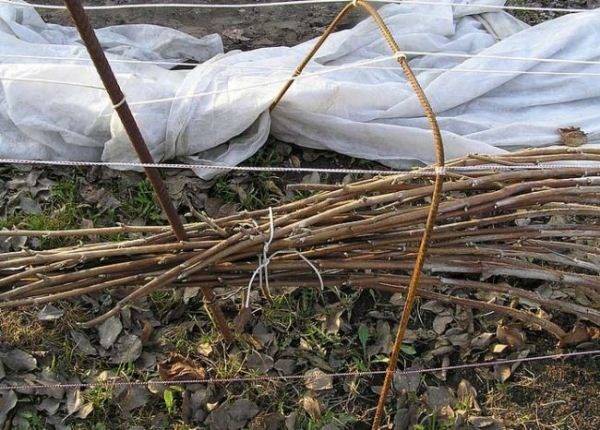



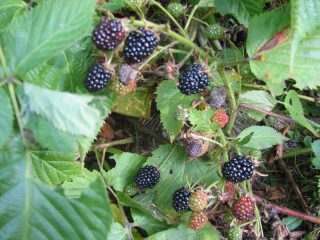

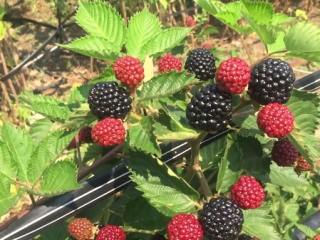


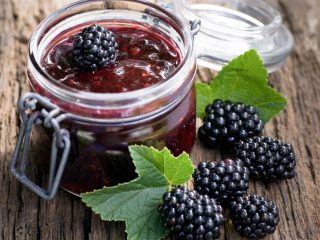

I prescribed Gigant blackberries, I'll see what happens. I have thornless blackberries Polar that manage to bear fruit in Siberia, but the summer is shorter and not all of them ripen and the taste is good with a winey taste